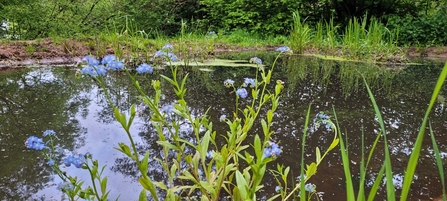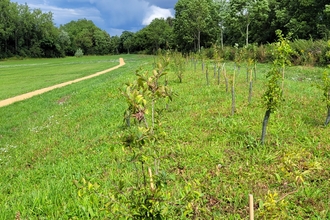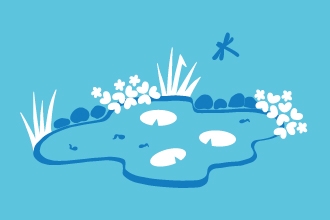
Water forget-me-not in ponds at The Knapp & Papermill nature reserve by Becca Bratt
A wetland feature, no matter how big or small, is one of the best things you can do for wildlife in your community greenspace. When it comes to ponds, ditches, lakes and even bird baths, more is always better. The only thing better than a pond, is two ponds!
Ponds support two thirds of all freshwater species but the UK has lost over half a million ponds in the last 100 years. Ponds are vital habitats, especially in urban areas, providing not only homes for frogs, toads, dragonflies (and a whole host of other wetland specialists) but also a water sources for birds and mammals, food sources for bats, swifts and swallows and tranquil, calming locations for people.
Clearly then, creating a pond in your greenspace, whether this be a small container pond or large wildlife pond, is the best way to benefit your local wildlife. But, there are a few items to consider before you start digging.
Do I need planning permission?
For most pond creation projects, planning permission will not be required as the works fall under permitted development. However, there are some legal limits and criteria to be aware of.
Permitted development rules generally apply to domestically owned land (i.e. gardens) so, therefore. most community greenspaces fall outside this criteria. It differs between local authorities but some will deem community ponds to be permitted development whereas others will not. Always contact your local planning authority to enquire about your plans. You also need to ask the land owner’s permission.
Furthermore, if your planned pond is to be over 20m2 or 1m deep, then planning permission will be required. Additionally, permitted development ponds only cover those 5m away from buildings and boundaries.







